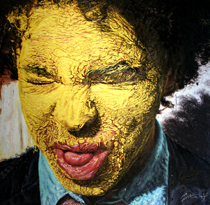Cinema Italiano: The Complete Guide from Classics to Cult
By Howard Hughes
London, UK: I.B. Tauris, 2011
320 pp. $20
Hollywood’s global domination of cinema has served to reduce film production elsewhere, except India (“Bollywoodâ€) and Nigeria (“Nollywoodâ€). It is a sad fate, for non-American film offers diverse opinions and perspectives that may not suit Western or North American tastes, but do prove that human experience is a panorama, not one monotonous vision.
The cinema of Italy, though “Western,†exemplifies a once-robust theatre that, in its heyday in the 1950s, enjoyed “820 million patrons,†but now, is merely a shadow of its former self. Howard Hughes’s Cinema Italiano: The Complete Guide from Classics to Cult laments the disappearance of mass-export Italian cinema as a loss for all cinema enthusiasts. Indeed, the Italian productions, from the late 1940s to the 1980s, constituted a gorgeous “banquet,†an “amazing feast.†If there were “turkeys,†there was also Fellini’s La Dolce Vita (1960).
Hughes’s catalogue of the most notable films, genre by genre, is a fan letter. He tracks down every conceivable tidbit of info about every film that merits consideration, noticing even the composers and styles of soundtracks, not to mention the looks of costumes and sets and locations, plus which film versions have been cut or censored, and which ones are must-sees. His work reads as if he has watched closely the acknowledged classics as well as the sublime – or the ridiculous – “cult†films. His study insists that Italian film had something for every taste – and was often inventive and influential, even in imported genres such as “horse operas†(Westerns) and spy capers. Although some Hollywood directors, like Steven Spielberg, move easily between “popular†and “art-house†cinema, Italian directors have tended to blend these audiences and blur such distinctions.
Hughes asserts, “the work of world cinema heavyweights – Fellini et al. – has much in common with popularist filmmakers such as Sergio Leone (Westerns) and Dario Argento (horror/thriller).†One reason for this collage approach is that directors, composers, and actors found employment in satisfying “frantic†film craze after craze, which seems to be the history of Italian cinema. After the neo-realism movement of the late 1940s (exemplified by Di Sica’s The Bicycle Thief [1947]), there were sword-and-sandal spectaculars (1958-64), “spaghetti Westerns†(1965-1970), English – Hammer-studio-inspired – Gothic horror (1960-65), James Bond-styled spy flicks (1963-67), and then, 1970-onwards, “comedy, horror-thrillers (gialli) and crime films (poliziotteschi)….â€
Intermingled and overlapping with the above were “mythological epics,†“costume adventures,†sci fi sagas, political narratives, World War II flicks, and the great films of “love and death†(Fellini, Pasolini, Wertmuller, etc.). The zombie & cannibal-flick mania serves, for Hughes, as a suitably gory end to Italian cinema’s glory days. But the glories were (or are) substantial. Hughes’s “Top 20†list of Italian films is eclectic, encompassing all the above genres. Yes, La Dolce Vita is here, but so is Pasolini’s The Gospel According to St Matthew (1964), which Hughes acclaims as the greatest Italian film. One must also see, he says, the pseudo-documentary, Battle of Algiers (Pontecorvo, 1966), and the arty drama, Blowup (Antonioni, 1966). The archetypal master-criminal (Bond-type) film is Diabolik (Bava, 1968), and Illustrious Corpses (Rosi, 1975) reveals the blood-sport seriousness of politics. Sergio Leone’s The Good, The Bad and The Ugly (1966), starring Clint Eastwood as “The Man With No Name,†is revered, as is Argento’s giallo, Suspiria (1977).
Along with listing incomparable movies, Hughes also nods at flicks of notable fun or thoughtfulness or both, naming The Trojan War (Ferroni, 1961), Blood and Black Lace (Bava, 1964), Special Mission Lady Chaplin (De Martino, 1966), Fellini’s Satyricon (Fellini, 1969), The Inglorious Bastards (Castellari, 1977), and even Zombie Flesh Eaters (Fulci, 1979), among others. Numbering 300 pages, Cinema Italiano seems to canvass every picture that anyone could ever care to see. Hughes’s inventory is exhaustive, but the blow-by-blow plot summaries are excessive, rendering the work tedious as a cover-to-cover read, if indispensable as a one-by-one guide.






Hi Professor Clarke,
It’s been a long time since Modern Canadian Poetry! I wanted to ask you a question about your opening line- perhaps it’s more about defining mystical and intellectual from a poetic perspective-
How do you define the poetry of Rumi, Hafez and other sufi poets? They defy the ‘intellectual’ term– would you call them ‘mystical’ or ‘sentimental’- or are they accessible enough to not be defined as either ‘intellectual’ or ‘mystical’, despite being rooted in a mystical tradition?
Hope you’re doing really well!